When it comes to grid-scale energy storage, redox flow batteries (RFB) are one of the big competitors for lithium-ion batteries. In preliminary tests, RFBs can be manufactured with longer lasting lives, be made more scalable, and are easier to recycle than other battery technologies. Yet, after investing millions of US tax dollars into a cutting edge RFB formula, the American government basically gave it away to China, who is currently the lead producer of RFB. So, how did this invention flow out of the US? And why should we even care about redox flow batteries?
Going with the redox flow batteries
Let’s face it. Installing tons of solar panels and wind turbines is not going to be enough to decarbonise our energy system. We desperately need cost-effective batteries to store spare renewables and reuse them when we need them most. According to the US Department of Energy (DOE)’s National Renewable Energy Laboratory (NREL), the American energy storage capacity should experience an over fivefold increase by 2050 to meet the country’s zero-carbon electricity demand.1 Funny enough, the very same department gave away a promising storage technology to China a few years back.
Before trying to make sense out of this crazy story, let’s understand what RFBs are all about. The key components of this system aretwo electrolytes, which are liquid solutions containing active elements in a different oxidation state. Unlike lithium-ion batteries, where a single electrolyte floats inside the cell, in a flow battery two solutions storing the chemical energy sit inside external tanks.2 During the battery operation, these electrolytes flow from the tanks towards a central chamber. In its simplest design, this chamber, a.k.a. stack, features two half-cells separated by an ion-selective membrane. So, what about the “redox” bit?3 This term refers to the red-uction and ox-idation reactions the chemicals dissolved in the solutions are subjected to.
To be more specific, upon discharging, the ions in one of the tank-cell pairs, called anolyte, increase their oxidation state. In other words, they lose electrons. Traveling through an external circuit, these electrons by-pass the membrane and reach the other side, i.e., the catholyte. Here, ions take up the electrons and reduce their oxidation state. To recharge the battery, you just connect it to the grid and use the incoming electrons flow to reverse the redox process.
Depending on the active elements in the electrolyte, there are various types of RFB. However, the all-vanadium configuration is currently the most widely commercialized.4 So, why vanadium? Not because it’s the most beautiful element in the world.5 Rather, this metal can have multiple oxidation states6, which comes in handy when you rely on the redox mechanism. By harnessing vanadium’s chemical versatility, you don’t need to introduce any other element into the electrolytes except sulfur. Basically, you use a mild sulfuric acid solution to dissolve vanadium sulfates. After doing that, you’re left with two vanadium redox couples, namely V2+/V3+ in the anolyte and V4+/V5+ in the catholyte.7 This removes the cross-contamination risk implied by other designs. Which is why vanadium RFB can last up to 4x more than any other comparable device.8
America Last
Lithium-ion batteries are great for short-term applications but RFB are more apt for long-duration storage. RFB’s supply chain is also greener as their components are more recyclable, which reduces the amount of waste ending up in landfills. It’s for this reason many believe they’ll play a key role in the future of energy storage. Yet, this technology is nothing new. NASA began developing them during the energy crisis in the 70s.9 After three decades of lackluster results, 2006 was a breakthrough year. As several patents expired10, it opened up private companies to get their creative electrolytes flowing. Also, in that same year, US researchers started working on an improved recipe for an RFB.11
After 6 years of efforts funded by over 15 million American taxpayer dollars, scientists came up with a vanadium-based electrolyte formulation twice as powerful as similar mixtures. On top of that, their battery could perform well for up to 30 years without showing any sign of degradation. So, what was their trick? They simply swapped the conventional sulfuric acid solution with a blend of hydrochloric and sulfuric acid.12 When using this modified mixture, they increased the solubility of vanadium, which boosted the electrolyte energy density. The benefits didn’t stop there though. The acidic mix could work on a wider range of temperatures compared to the pure sulfuric acid solution, which reduces heating and cooling costs.
Supercharged by those electrifying findings, in 2012 the research group leader, Gary Yang, applied to the DOE for a license to commercialize the batteries outside of the lab. Once he signed the agreement, he launched the startup UniEnergy Technologies. However, because of the long time needed for his battery to generate returns, Yang claimed he struggled to persuade US investors to sponsor his creation. Using that as an excuse, he turned to the Chinese company Dalian Rongke Power Co. Ltd, and in 2017 granted them an official sub-licence to manufacture some of the batteries in China.
And this is where things went wrong.13
Although the license entailed making most of the batteries in the US, battery production gradually switched from America to China. According to people I spoke to that worked at UniEnergy at the time, the key components of the battery were never built in the US at all, but instead built in China and shipped to the US for assembly and testing. To make matters worse, UniEnergy continued its shifting of this US funded tech to outside the US by transferring its license to the European company, Vanadis Power in 2021.
According to Yang, the underlying issue is that, unlike China, the US doesn’t have the supply chain to meet production demand. Yet, this infrastructural gap wasn’t created overnight. Over the last 10 years, China issued a series of national policies that flowed a lot of cash out of the government coffers to scale up vanadium RFB.14 So it shouldn’t be a surprise that after 6 years of development and a 300 million dollars of investment, last May a 100MW/400MWh demonstration facility was connected to the Dalian grid.15 And guess who made that battery? Yep, Dalian Rongke Power Co. Ltd. While this facility is already the world’s largest RFB, the final installation will create twice as much power.16 I couldn’t find confirmation that this facility is using the mixed electrolyte, but I did hear from sources that Dalian is currently manufacturing the new electrolyte in large quantities.
But the craziness of this story doesn’t stop there. Remember how the license was transferred to Vanadis Power? Well, as mentioned on their website17, the company is contributing to the Dalian Rongke Power China-based project. Nonetheless, EU regulations will force Vanadis to set up a factory in Europe.
You would think that the US government should be as reluctant as Europe when it comes to moving a US-funded invention overseas, right? Nevertheless, UniEnergy Technologies magically got away with that twice. I can hear you already. How on earth did that happen? As revealed by an NPR investigation, the DOE failed to enforce its own licensing rules.18 When interviewing DOE officials, the Government Accountability Office19 found they were struggling to track their licenses because of a limited budget and inadequate IT systems. What’s even more absurd is that a Washington-based company, like Forever Energy, has been trying to get a license for this technology for over a year. Apparently, the DOE has now revoked the Dalian Rongke Power Co. Ltd license. Although it’s too late to stop Chinese battery expansion, perhaps the US government is still in time to prevent Forever Energy from changing its name to Forever Waiting. Awkwardly, the US funded the project with tax dollars, then sent it to China, and now a domestic manufacturer is blocked from making them.
I actually had a chance to speak to Forever Energy about this whole debacle, as well as about the technology they’re trying to bring to market. They have a modular battery design that takes advantage of the mixed electrolytes’ increased energy density. Single acid RFBs are usually pretty large and relegated to grid scale application, but Forever Energy has a working design that’s roughly the size of a refrigerator and can store up to 40 kWh of energy. The best part is that it should be cost competitive with similar sized lithium ion battery systems, but last 30-40 years. It’s a solution meant to take on the residential energy storage market. If they can secure the license, they’re definitely a company to keep your eye on.
There are some alternatives to UniEnergy’s electrolyte recipe. For instance, US Vanadium claims to make the most pure electrolyte in the world.20 As heralded by the company, their formulation’s ultra-high purity increases the efficiency of vanadium RFB. Having bought 580,000 liters of it, the energy storage provider CellCube seems to back their battery elixir. Galvanized by this deal, last September US Vanadium invested $2.1 million to expand their Arkansas-based electrolyte production. CellCube will use US Vanadium’s solution to fuel an 8MWh system in Illinois. This system will support a microgrid system and integrate with rooftop solar panels and a flywheel. While this is a much lower-scale application compared to the one developed by Rongke Power, it relies on a 100% US supply chain. But there are some bigger projects underway as well. The California non-profit energy supplier Central Coast Community Energy (CCCE) is planning to have up and running vanadium RFB installations for a total capacity of 226MWh by 2026.21 Being able to back up the grid for up to 8 hours, these storage systems will be crucial to mitigate the effect of climate-induced blackouts that will occur in the state over the next few years.22
Flowing towards a greener future
Whether being produced in the US, China or elsewhere, RFB could help us make the most out of our renewables capabilities by providing viable energy storage during times of overgeneration. Having said that, while vanadium is relatively abundant, its conversion into vanadium pentoxide, the typical raw material for RFB, is highly localized. With Chinese and Russian mills accounting for 75% of global production,23 you can probably see why diversifying its value chain is fundamental to catalyze the mass adoption of vanadium RFB. However, on that note, there are many ways to acquire vanadium, including from fly ash. The company US Vandium in Hot Springs, Arkansas produces high quality vanadium using that method. The recent passage of the Inflation Reduction Act here in the US is also going to have a major impact on scaling up more local production.
But how do RFB compare against the status quo lithium-ion batteries? First of all, unlike typical lithium-containing electrolyte24, vanadium-based solutions are not flammable.25 This means you won’t have any risk of thermal runaway in case of faults or mishandling.26 Besides a greater flammability safety, RFB are also better for the environment. A recent life cycle assessment compared the eco-impacts of vanadium RFB and lithium-ion batteries. Even when using 100% virgin vanadium, RFB were found to be greener than lithium-ion storage devices in terms of land acidification, particulate matter (PM) release and human toxicity. What’s more is that replacing 50% of the feedstock with recycled vanadium would further reduce its global warming contribution.27 And that’s feasible in the real world. Remember US Vanadium? Last year the company recovered 97% of their spent electrolyte in a demonstration project.28 However, on the lithium ion battery side, there are many startups that have been improving lithium recovery and their costs.29
Another key advantage for RFB is a more flexible design than self-contained systems such as lithium-ion batteries. When it comes to RFB, energy and power output are decoupled, or independent if you like. Increasing the storage capacity would be just down to expanding external tanks holding the electrolyte. No need to add more cells to the stack … or add to the stack itself. For long-duration applications, when you need to deliver many kWh, switching to RFB will save power waste and costs, which can dispatch electricity for 12 hours or more30. In theory, they could go even higher, but in practice you need to factor in costs. Same applies to lithium-ion batteries, whose most economical storage duration is capped at around 6-8 hours.31 In addition, thanks to its lower degradation, RFB have a lifespan of up to 30 years (in some cases it may be longer).32 In comparison, typical lithium-ion devices can last for about 10 years or so (depending on use).33 Once again, other designs such as lithium titanate-based cells could run for much longer but they’re not as financially viable.34 35 On the other hand, RFB’s round trip efficiency (RTE) is around 85% if you’re lucky, while lithium-ion sits around 95%.36
One practical safety issue is the long-term storage of acidic solutions. While RFB’s are less flammable, their use of hydrochloric acid and sulfuric acid means these corrosive and toxic chemicals must be stored onsite, perhaps outside your home. Not just a little bit, either, but many liters of it, depending on your power needs. When this system is damaged or eventually corrodes, the leak could be hazardous.2 With proper engineering and maintenance, that shouldn’t be a major concern, but it’s still important to keep in mind.
So, what about costs? A recent simulation compared the economics of lithium-ion and vanadium RFB batteries when integrated with a 636 kW PV facility in southern California. Researchers found that the system can achieve a levelized cost of electricity (LCOE) below $0.22/kWh using either of the storage technologies.37 Interestingly, they also mentioned that vanadium RFB would make more sense in hotter climates, where lithium-ion devices age faster. When it comes to levelized cost of storage (LCOS), duration is a key factor. Specifically, at discharging times lower than 4 hours, lithium-ion batteries work out cheaper. Conversely, for longer durations vanadium RFB become more cost-effective.38 On the other hand, when considering transmission systems as use case, RFB are more expensive than lithium-ion, pumped hydro and compressed air storage technologies.39 Just to give you some perspective, the vanadium-based system is the lowest-cost option among RFB, with an LCOS as low as $314/MWh. In contrast, relying on compressed air would let you store energy for only $116/MWh. With more investments in efficiency improvements, in 2030 RFB will be one of the most competitive storage solutions for discharge times above 4 hours and requiring more than 300 cycles per year.40 For instance, a 1% RTE efficiency increase would make RFB displace lithium-ion for high frequency applications.
Clearly, giving away our electrolyte recipe to China was a terrible mistake and we will continue pay for it. And an American company who is actively trying to bring this technology to market is still struggling to get the license to do so. But there’s still time for redemption. We already have the expertise, so catching up is just down to building out a solid supply chain. Being more sustainable, scalable and durable than lithium-ion devices, the US should bet on this technology without losing its returns this time. If this long-term energy storage tech pans out, we’ll keep our grid flowing when climate-driven disruptions hit.
- “Grid Operational Impacts of Widespread Storage Deployment – NREL.” ↩︎
- “DOE ESHB Chapter 6 Redox Flow Batteries.” ↩︎
- “What is Redox Flow Battery? – Linquip.” ↩︎
- “Vanadium Redox Flow Battery – an overview | ScienceDirect Topics.” ↩︎
- “The Most Beautiful Metal – VanadiumCorp Resource Inc..” ↩︎
- “Battery valences power vanadium demand – North of 60 Mining News.” ↩︎
- “Vanadium Redox Couple – an overview | ScienceDirect Topics.” ↩︎
- “Redox flow batteries: Status and perspective towards sustainable ….” ↩︎
- “Advanced Redox-Flow Batteries: A Perspective – IOPscience.” ↩︎
- “Redox Flow Batteries 2018-2028: Markets, Trends, Applications.” ↩︎
- “How the U.S. gave away a breakthrough battery technology to China.” ↩︎
- “UniEnergy Technologies Goes from Molecules to Megawatts.” ↩︎
- “Rubio Slams Energy Department’s Decision to Transfer Critical ….” ↩︎
- “Chinese government’s strategic push for energy storage to yield …. ↩︎
- “After 6 Years, The 100MW/400MWh Redox Flow Battery Storage ….” ↩︎
- “First phase of 800MWh world biggest flow battery commissioned in ….” ↩︎
- “ABOUT – Vanadis Power.” ↩︎
- “How the U.S. gave away a breakthrough battery technology to China.” ↩︎
- “GAO-18-327, FEDERAL RESEARCH.” ↩︎
- “Signs Offtake Agreement for 580000 Liters with CellCube.” ↩︎
- “226MWh of vanadium flow batteries on the way for California ….” ↩︎
- “California Faces Summer Blackouts from Climate Extremes.” ↩︎
- “Materials availability and supply chain considerations for vanadium ….” ↩︎
- “LITHIUM FIRE PREVENTION – Environmental Health and Safety.” ↩︎
- “VANADIUM HAZARD SUMMARY IDENTIFICATION … – NJ.gov.” ↩︎
- “Thermal Runaway: Understanding the Fundamentals to Ensure ….” ↩︎
- “Life cycle assessment of lithium-ion batteries and vanadium redox ….” ↩︎
- “Solving the Technical and Economic Challenges to Reprocessing ….” ↩︎
- “The Race To Crack Battery Recycling—Before It’s Too Late | WIRED.” ↩︎
- “Flow Batteries: Energy Storage Option for a Variety of Uses.” ↩︎
- “Fact Sheet | Energy Storage (2019) | White Papers | EESI.” ↩︎
- “Flow Batteries: Energy Storage Option for a Variety of Uses.” ↩︎
- “Life cycle assessment of lithium-ion batteries and vanadium redox ….” ↩︎
- “Unlocking battery potential with lithium-titanate: Welch.” ↩︎
- “A Simple Comparison of Six Lithium-ion Battery Types – Owlcation.” ↩︎
- “Flow Battery – an overview | ScienceDirect Topics.” ↩︎
- “The economics of firm solar power from Li-ion and vanadium flow ….” ↩︎
- “Lithium-Ion Energy Storage Cost vs. Pumped Hydro Or Flow Battery ….” ↩︎
- “Lazard LCOS v2.0.” ↩︎
- “Article Projecting the Future Levelized Cost of Electricity Storage ….” ↩︎



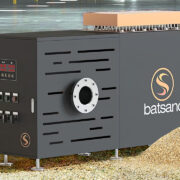



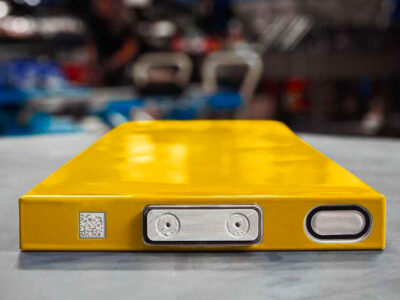
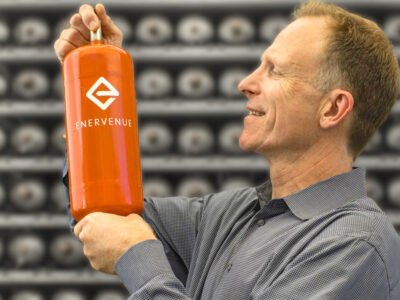
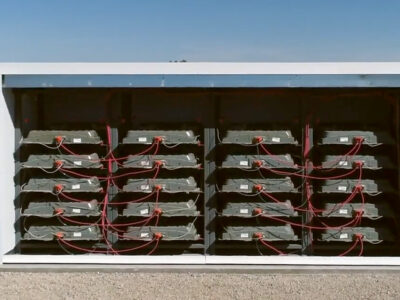



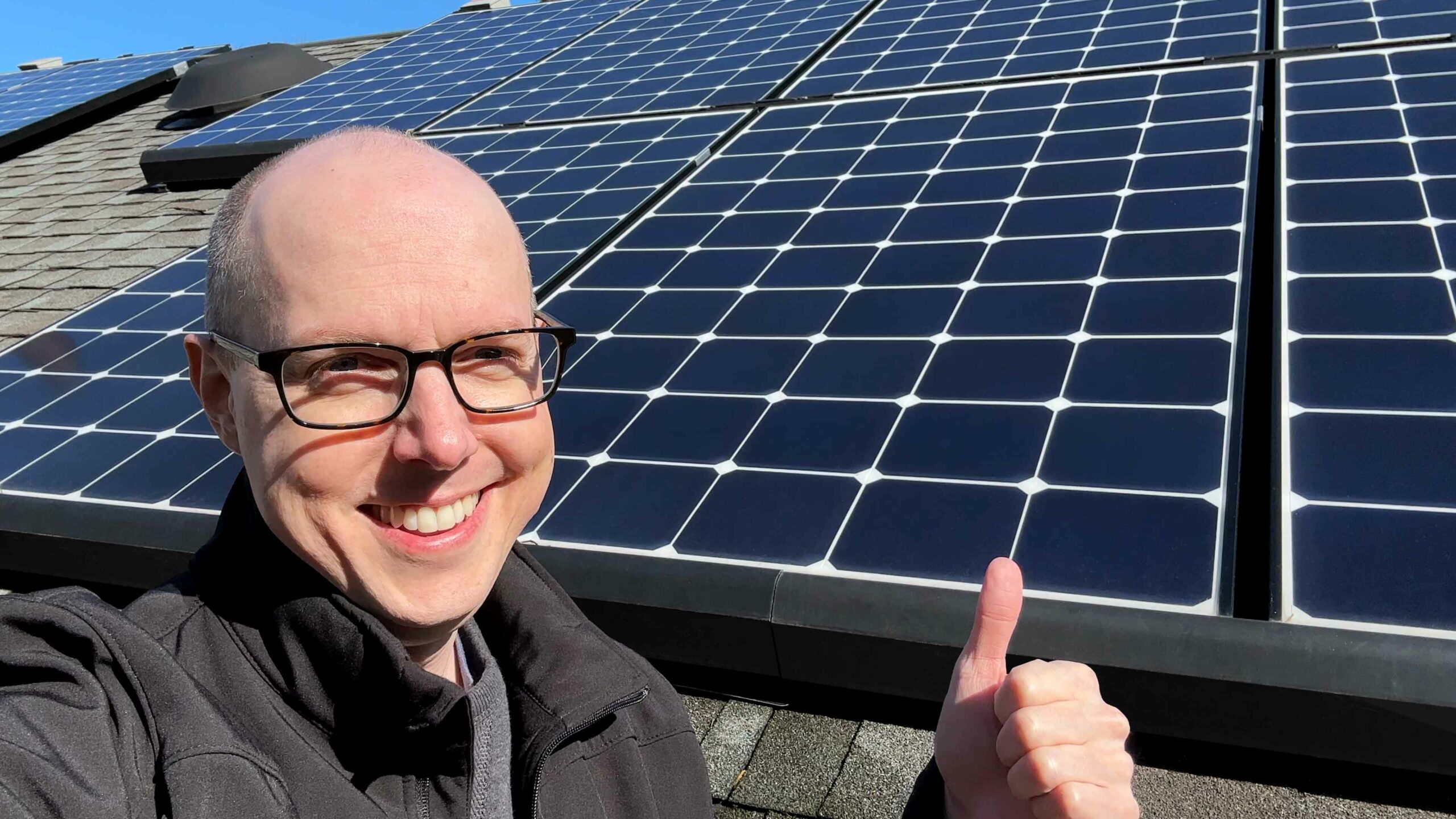


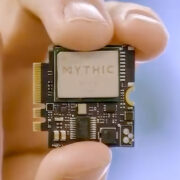
Comments